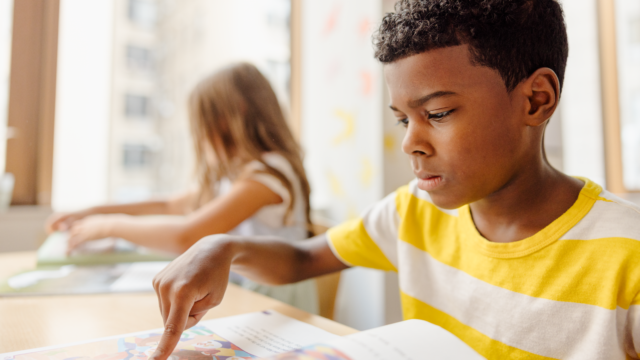
This blog post is part of a series focusing on media literacy. You can also download this poster on news literacy for your classroom.
Media literacy. There’s a lot of interest in it right now. A problem is that often educators think teaching media literacy means teaching students how to avoid being fooled by fake stories on Facebook. We need to change that. Let’s define media literacy correctly.
Students cannot be media literate if they don’t understand the word media. A workable definition is that media are the means of mass communication. In other words, we use media to spread messages to large audiences. What medium do you want to use to get your message out to the world? Newspaper? Television? Blog? Magazine? Social media site? The first step toward media literacy is understanding the various types of media and being able to analyze the advantages and disadvantages of each. In this post, we’ll look at news media.
News media have as their purpose to share information and current events. Note the “as their purpose” phrase. The intention is not to entertain, persuade, or sell, but to provide information. If we share this definition with students, much of the problem of falling for “fake news” disappears: Fake news doesn’t come from news media.
How to Teach Media Literacy
Here are four tips for teaching media literacy to K-12 students in the digital age.
1. Tell students to avoid instantly reacting to a headline.
Do not forward, share, or retweet something until reading all of it and looking at the source. The media literate person knows to check the source.
2. Explain to students that older may be wiser.
Look for good ol’ news media: magazines, newspapers, and television channels that have been around and have long histories in the business. Your students should be aware that there are newspapers and magazines with histories that go back hundreds of years. There are television channels that have been here since TV was invented. Start there—yes, the “mainstream media.”
Do not be fooled by people bashing mainstream media. Look at the word: mainstream. Not fringe, not troll-farmed, not sensational. If a story is for real, these sources will have it covered. The media literate person knows to check the old pros first.
3. Teach them that biased does not mean false.
There is a lot of news to cover. How does the media decide what to present? Recently, I was channel surfing as I sat on a stationary bike. At the top of the hour, two channels had very different leads to start their broadcasts. Channel A led with Paul Manafort, Trump’s former campaign manager, being found guilty of several financial crimes and talked extensively about his work on the Trump campaign. Channel B led with an arrest of an illegal immigrant suspected of killing a young woman in Iowa. Is either one fake news? No. Each reported what actually happened. Nothing was made up. No reporter lied. Is there bias? Maybe. Could A be biased against Trump and want to feature stories that make him look bad? Could B be biased against immigrants and want to feature stories that make immigrants look bad? Sure. But neither is lying about what happened.
Being media literate means being aware of bias and also understanding that it is possible to be biased while telling the truth. Information that shows something you don’t want to see is not fake news.
4. Portray media as a best friend of the people.
News media are critical in a democracy. Voters must be informed if they are to make good decisions. A little history: Within minutes of creating a new country, our Founding Fathers decided to make 10 changes to the Constitution. The very first change they proposed?
Congress shall make no law respecting an establishment of religion, or prohibiting the free exercise thereof; or abridging the freedom of speech, or of the press; or the right of the people peaceably to assemble, and to petition the Government for a redress of grievances.
The First Amendment protects the press, the news media. Why? The Founders were worried that the press, not specifically mentioned in the articles setting up the government, could be attacked. Before anything else, they wanted to guarantee freedom of the press along with the others.
"…the freedom of the press, as one of the great bulwarks of liberty, shall be inviolable." —James Madison
"Our liberty depends on the freedom of the press, and that cannot be limited without being lost." —Thomas Jefferson
The Founding Fathers realized that a free and respected press would hold government leaders accountable, publicize important issues, and educate citizens so they can make informed decisions. Attacking the press, then, is a very dicey proposition. If the press is demeaned, those three things don’t happen. Who will perform those functions? This is not a liberal or a conservative issue. We all must agree that a free press is critical to a well-functioning democracy.
Spotlighting news media literacy in the classroom is the first step to building informed citizens. But it's only one piece of the media literacy puzzle. We’ll look at other pieces in future posts.
The views expressed in this article are those of the author and do not necessarily represent those of HMH.
***
Blog contributor Erik Palmer is an author on the HMH Into Reading and HMH Into Literature programs.
This blog, originally published in 2018, has been updated for 2021.
Download our NEW activities calendar for the 2024–25 school year!












